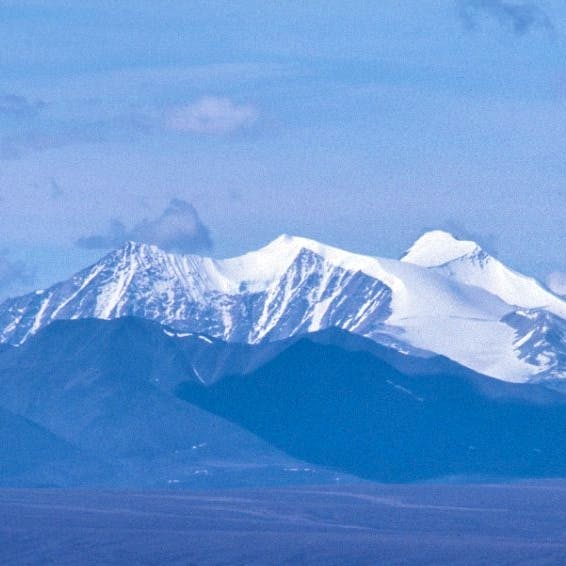September 22, 2015
Contact: Courtney Sexton; csexton@defenders.org, 202-772-0253
WASHINGTON, DC — Today Secretary of the Interior Sally Jewell and Department of Agriculture Secretary Tom Vilsack announced sweeping decisions with far-reaching consequences for the imperiled greater sage-grouse, the Sagebrush Sea and hundreds of fish and wildlife that depend on this vital landscape.
The Obama administration announced the conclusion of a four-year federal land use planning process designed to implement a National Greater Sage-Grouse Planning Strategy, an unprecedented effort to improve the management of more than 60 million acres of the Sagebrush Sea. Today’s announcement involved the completion of final decision documents for 14 Bureau of Land Management (BLM) and Forest Service conservation plans for the sage-grouse, a species that occurs on millions of acres of public lands throughout the American West. The planning effort recognized the importance of conserving large expanses of sagebrush grasslands for sage-grouse and other sagebrush-dependent species, designating tens of millions of acres as priority habitat on federal lands, including approximately 13 million acres of Sagebrush Focal Areas. Though the final plans will result in the general improvement in management of the covered lands, they failed to incorporate key prescriptions identified by the government’s own scientists as necessary for the long-term conservation and recovery of the grouse.
The U.S. Fish and Wildlife Service (FWS) determined that the greater sage-grouse does not warrant protection under the Endangered Species Act (ESA), a decision based largely on the final federal land use plans. Current advanced scientific understanding of the species, combined with the inadequacy of the plans to protect and restore the sage-grouse, undermines the Service’s decision not to list the bird under the ESA.
The following is a statement from Jamie Rappaport Clark, Former president and CEO of Defenders of Wildlife:
“We commend the administration’s unprecedented and epic land use planning process covering millions of acres of public lands throughout the American West, but the final plans fall short of what is necessary to eliminate known threats to the greater sage-grouse. While the final federal sage-grouse plans advance wildlife management on millions of acres of public lands, they failed to adopt key conservation measures identified by the government’s own scientists and sage-grouse experts as critical to conserving the bird, such as protecting winter habitat or confronting the growing threat of climate change to the species’ habitat.
“Listing decisions under the ESA must be based upon the best available science and specific listing criteria, including the adequacy of regulatory mechanisms to address ongoing threats and support long-term conservation and recovery of imperiled species. In this case, the shortcomings of the federal sage-grouse conservation plans and a lack of regulatory certainty are contrary to and undermine the Fish and Wildlife Service’s determination that the species no longer warrants protection under the ESA.”
“Westerners love their sage-grouse and, like the majority of Americans, support land management that does not sacrifice our rich fish and wildlife heritage for short-term profits from unsustainable land use and development. They also support decisive action to save the sage-grouse—including listing the bird under the ESA—to prevent the species from becoming extinct. The fate of the sage-grouse, and hundreds of other species, is linked to the future of the Sagebrush Sea. More still needs to be done to ensure the bird’s long-term survival on this fragile and vital landscape.”
# # #
Background:
The iconic greater sage-grouse once ranged across 297 million acres in North America and numbered as many as 16 million birds. Today, greater sage-grouse range has been reduced by nearly half and populations have experienced long-term declines. Sage-grouse require large expanses of healthy sagebrush steppe, an increasingly rare habitat in the West. Millions of acres of the Sagebrush Sea have been lost to agriculture and development over the past 200 years. What remains is fragmented and degraded by poorly managed oil and gas drilling, livestock grazing, mining, unnatural fire, invasive weeds, off-road vehicles, roads, fences, pipelines and utility corridors.
The U.S. Fish and Wildlife Service determined greater sage-grouse warranted protection under the Endangered Species Act (ESA) in 2010, and committed to consider the bird for listing by this month. This date certain prompted federal agencies, states and counties to initiate a multitude of planning processes to implement new conservation measures to conserve sage-grouse on millions of acres in the west with the hope of averting the need to list the species. The shortcomings of the final plans coupled with recent demographic information and the latest research published by the U.S. Geological Survey on the plight of sage-grouse, are a blunt reminder that strong, science-based conservation measures—and listing under the Endangered Species Act are necessary at this time to protect the species.
###
Defenders of Wildlife is dedicated to the protection of all native animals and plants in their natural communities. With more than 1.2 million members and activists, Defenders of Wildlife is a leading advocate for innovative solutions to safeguard our wildlife heritage for generations to come. For more information, visit www.defenders.org and follow us on Twitter @defendersnews.
For over 75 years, Defenders of Wildlife has remained dedicated to protecting all native animals and plants in their natural communities. With a nationwide network of nearly 2.1 million members and activists, Defenders of Wildlife is a leading advocate for innovative solutions to safeguard our wildlife for generations to come. To learn more, please visit https://defenders.org/newsroom or follow us on X @Defenders.
News

Defenders Slams Trump Interior Pick Burgum


